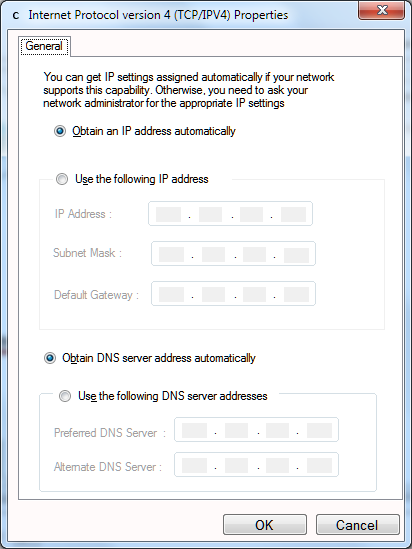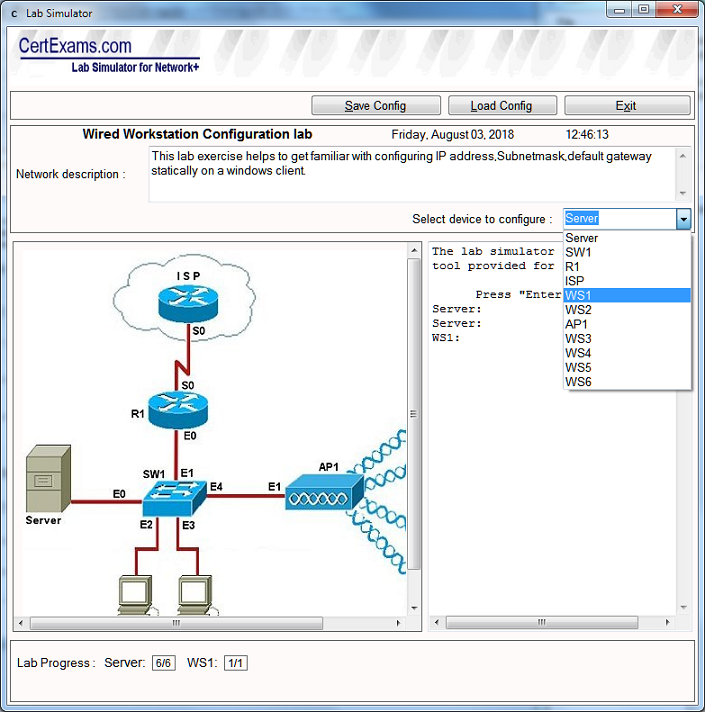Your task is to configure DHCP server (Server) for the following:
Server Network IP Address:
Server IP address: 192.168.1.2
Subnet mask: 255.255.255.0
Default Gateway: 192.168.1.1
DHCP Configuration parameters:
IP address range: 192.168.1.3 to 192.168.1.254
Subnet mask: 255.255.255.0
Default Gateway: 192.168.1.1
DNS Primary: 8.8.8.8
DNS Secondary: 8.8.4.4
Instructions:
1. Click on Server in the network diagram this will open Windows Networking dialog box.

2. Configure IP address, subnet mask and default gateway on the Server with 192.168.1.2, 255.255.255.0, and 192.168.1.1 respectively in DHCP Server IP settings tab

3. Click on DHCP scope tab and enter the Start IP address range 192.168.1.3 and End IP address as 192.168.1.254 , Subnet Mask 255.255.255.0 , Default-gateway 192.168.1.1 , DNS Primary as 8.8.8.8 and 8.8.4.4 for DNS Secondary.

4. Click OK button
5. Click on WS1 this will open Windows Networking dialog box. Click on "Obtain IP Address automatically" option button (if it has not selected already) and click OK button.

6. Select WS1 from "Select device to configure" drop down and issue command "ipconfig /all". You will see that IP address, subnet mask, and default gateway, DNS server address assigned.

WS1:ipconfig /all
Ethernet adapter Local Area Connection:
Host Name .....................: WS1
Connection-specific DNS Suffix.:
Description ...................: Wired Network Adapter
Physical Address ..............: 00A0.c914.f5c5
DHCP Enabled ..................: Yes
IPv4 Address ..................: 192.168.1.3
Subnet Mask ...................: 255.255.255.0
Default Gateway ...............: 192.168.1.1
DHCP Server ...................: 192.168.1.2
DNS Server1 ...................: 8.8.8.8
DNS Server2 ...................: 8.8.4.4
Notes: The DNS server itself requires an IP address, and subnet mask, at the minimum, to be addressable in the network. Therefore, you need to set these IP settings first. Also, note that the IP settings for DNS server must be configured statically. It cannot obtain it's own IP address from another DHCP server. Next, you configure the DHCP parameters that need to be passed on to the DHCP client computers as and when required by the client computers. Usually, DHCP will be able to pass several other parameters, but most widely used options are given here.